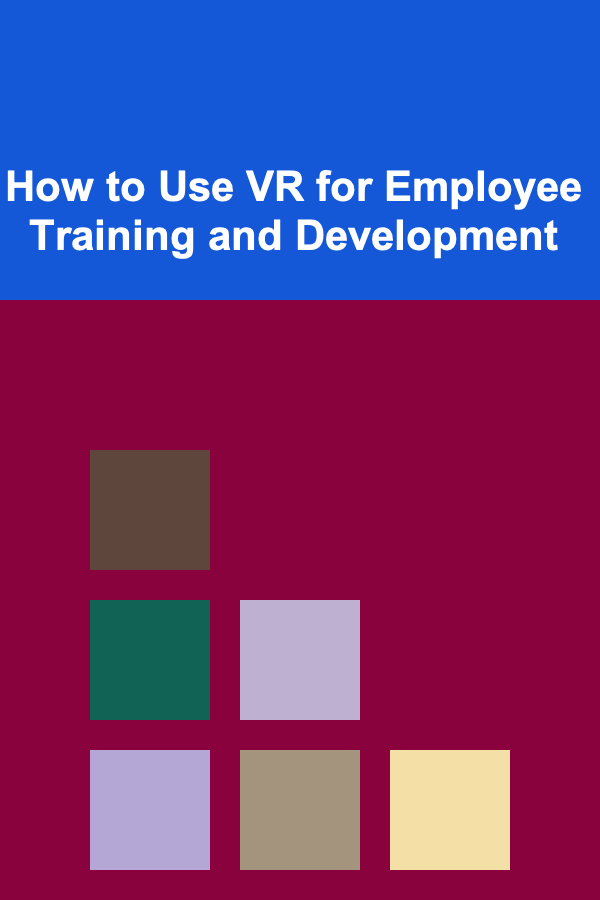
Thriving in a Remote Work Environment: Beyond Survival
ebook include PDF & Audio bundle (Micro Guide)
$12.99$8.99
Limited Time Offer! Order within the next:

The shift towards remote work has been one of the most significant transformations in the modern workplace. What was once considered a perk for a select few has become a mainstream reality for millions. While many companies and individuals initially scrambled to survive the transition, adapting basic technologies and processes to keep things afloat, the focus now needs to shift towards thriving in this new landscape. This involves more than just getting the work done; it requires cultivating a healthy, productive, and fulfilling remote work experience. This article explores the key strategies and mindsets needed to not only survive but truly thrive in a remote work environment.
I. Laying the Foundation: Essential Prerequisites for Remote Work Success
Before diving into advanced strategies, it's crucial to establish a solid foundation. This involves addressing the fundamental aspects of your remote work setup and ensuring you have the resources and support you need to succeed.
A. The Ergonomic Workspace: Your Home Office Haven
Your physical workspace is the cornerstone of your remote work experience. It directly impacts your comfort, focus, and overall well-being. Investing in creating an ergonomic and dedicated workspace is paramount.
- Ergonomic Chair: A high-quality, adjustable chair is non-negotiable. Look for features like lumbar support, adjustable armrests, and a comfortable seat cushion. Sitting for extended periods in a poorly designed chair can lead to chronic back pain and discomfort.
- Proper Desk Height: Your desk should be at a height that allows your elbows to be at a 90-degree angle when typing. Consider a standing desk or a desk converter to alternate between sitting and standing throughout the day.
- External Monitor and Keyboard: Using a laptop alone can strain your neck and eyes. An external monitor positioned at eye level and a separate keyboard will significantly improve your posture and comfort.
- Adequate Lighting: Poor lighting can lead to eye strain and headaches. Maximize natural light whenever possible and supplement with artificial light sources that are bright and adjustable. Avoid glare on your screen.
- Minimize Distractions: Choose a quiet location in your home where you can minimize interruptions from family members, pets, or household noises. Use noise-canceling headphones to further block out distractions.
- Personalization: While minimizing distractions is important, adding personal touches to your workspace can boost your mood and motivation. Consider plants, artwork, or items that inspire you.
B. Reliable Technology: Your Digital Lifeline
In the remote work world, technology is your lifeline. Having reliable internet, communication tools, and software is essential for seamless collaboration and productivity.
- High-Speed Internet: A stable and fast internet connection is critical for video conferencing, file sharing, and accessing cloud-based applications. Consider upgrading your internet plan if necessary. Test your internet speed regularly to ensure it meets your needs.
- Essential Software: Familiarize yourself with the tools your company uses for communication (e.g., Slack, Microsoft Teams), project management (e.g., Asana, Trello), and video conferencing (e.g., Zoom, Google Meet). Ensure you have the necessary licenses and training to use these tools effectively.
- Hardware Maintenance: Keep your computer and other devices updated with the latest software and security patches. Regularly back up your data to prevent data loss. Invest in a good antivirus program to protect against malware.
- Backup Power: Depending on your location, consider a backup power source like a UPS (Uninterruptible Power Supply) to keep your internet and computer running during power outages.
C. Clear Communication Protocols: The Foundation of Collaboration
Remote work relies heavily on clear and effective communication. Establish clear communication protocols with your team to ensure everyone is on the same page.
- Define Communication Channels: Establish clear guidelines for which communication channel to use for different types of messages. For example, use email for formal announcements, Slack for quick questions, and video conferencing for meetings that require more in-depth discussion.
- Set Response Time Expectations: Clarify expectations for response times to emails and messages. This helps prevent misunderstandings and ensures that urgent requests are addressed promptly.
- Document Everything: Document important decisions, meeting notes, and project updates in a shared document or project management system. This ensures that everyone has access to the information they need, even if they missed a meeting.
- Over-Communicate: In a remote work environment, it's better to over-communicate than to under-communicate. Provide regular updates on your progress, ask questions to clarify instructions, and proactively share information with your team.
- Regular Check-ins: Schedule regular check-ins with your manager and team members to discuss progress, address challenges, and maintain a sense of connection.
II. Cultivating Productivity and Focus: Mastering the Art of Remote Work
With the foundational elements in place, you can now focus on cultivating productivity and maintaining focus in the often-distracting environment of your home.
A. Time Management Strategies: Owning Your Day
Effective time management is crucial for maximizing productivity in a remote work environment. Without the structure of a traditional office, it's easy to get sidetracked or lose track of time.
- Time Blocking: Allocate specific blocks of time for different tasks or activities. This helps you stay focused and avoid multitasking, which can actually decrease productivity.
- The Pomodoro Technique: Work in focused bursts of 25 minutes, followed by a short break. This technique can help you maintain concentration and prevent burnout.
- Prioritize Tasks: Use a task management system like Asana, Trello, or even a simple to-do list to prioritize your tasks. Focus on completing the most important tasks first.
- Set Realistic Goals: Don't try to cram too much into one day. Set realistic goals that you can actually achieve. Breaking down large tasks into smaller, more manageable steps can make them seem less daunting.
- Eliminate Time Wasters: Identify your biggest time wasters, such as social media or excessive email checking, and find ways to minimize them. Use website blockers or set specific times for checking email.
B. Creating Boundaries: Separating Work and Life
One of the biggest challenges of remote work is blurring the lines between work and personal life. It's essential to create clear boundaries to prevent burnout and maintain a healthy work-life balance.
- Establish a Dedicated Work Space: As mentioned earlier, having a dedicated workspace helps you mentally separate work from personal life. When you're in your workspace, you're "at work." When you leave your workspace, you're "off work."
- Set Clear Working Hours: Establish clear working hours and stick to them as much as possible. Avoid working late into the night or on weekends, unless it's absolutely necessary.
- Take Regular Breaks: Just as you would in a traditional office, take regular breaks throughout the day. Get up and stretch, go for a walk, or do something that you enjoy.
- Communicate Your Boundaries: Communicate your working hours to your family and friends and let them know when you're not available. This will help prevent interruptions and ensure that you can focus on your work.
- "Commute" Simulation: Even a short walk around the block before and after work can help mentally separate work from personal life. It acts as a symbolic "commute".
C. Minimizing Distractions: Taming the Chaos
The home environment is often filled with distractions that can derail your productivity. It's crucial to develop strategies for minimizing these distractions and maintaining focus.
- Communicate with Family: Talk to your family members about your work schedule and let them know when you need uninterrupted time. Establish clear guidelines for when they can and cannot interrupt you.
- Use Noise-Canceling Headphones: Noise-canceling headphones can be a lifesaver for blocking out distractions, such as household noises or construction sounds.
- Turn Off Notifications: Turn off notifications for email, social media, and other apps that can distract you. Check these notifications at designated times throughout the day.
- Create a "Do Not Disturb" Signal: If you have children, create a visual signal (e.g., a sign on your door) that indicates when you need uninterrupted time.
- Designated Distraction Time: Instead of completely banning social media or other distractions, schedule short blocks of time to indulge in them. This can help you resist the urge to constantly check these sites throughout the day.
III. Fostering Connection and Well-being: Maintaining a Healthy Remote Work Lifestyle
Remote work can sometimes lead to feelings of isolation and disconnect. It's essential to proactively foster connection with your colleagues and prioritize your well-being to maintain a healthy and fulfilling remote work lifestyle.
A. Proactive Communication and Collaboration: Bridging the Distance
Maintaining strong relationships with your colleagues is crucial for both your professional success and your overall well-being. Proactive communication and collaboration are key to bridging the distance created by remote work.
- Schedule Regular Video Calls: Video calls are a great way to maintain face-to-face contact with your colleagues. Schedule regular team meetings and one-on-one check-ins via video conferencing.
- Use Collaborative Tools: Utilize collaborative tools like Google Docs, Asana, and Slack to work together on projects and share information.
- Participate in Virtual Social Events: Join virtual social events organized by your company or team. These events can help you connect with your colleagues on a personal level and build stronger relationships.
- Reach Out to Colleagues Regularly: Don't wait for scheduled meetings to connect with your colleagues. Reach out to them regularly via email, chat, or phone to check in and offer support.
- Water Cooler Moments, Virtually: Dedicate a few minutes each day for casual conversation with colleagues, just like you would at a water cooler in the office. This helps maintain social connections and can lead to unexpected collaboration opportunities.
B. Prioritizing Mental and Physical Health: Sustaining Peak Performance
Remote work can be isolating and can lead to burnout if you don't prioritize your mental and physical health. Taking care of yourself is essential for sustaining peak performance and maintaining a healthy work-life balance.
- Regular Exercise: Make time for regular exercise, even if it's just a short walk or a quick workout at home. Exercise can help reduce stress, improve your mood, and boost your energy levels.
- Healthy Diet: Eat a healthy and balanced diet. Avoid processed foods and sugary drinks. Focus on consuming whole foods, such as fruits, vegetables, and lean protein.
- Adequate Sleep: Get enough sleep. Aim for 7-8 hours of sleep per night. Create a relaxing bedtime routine to help you wind down before sleep.
- Mindfulness and Meditation: Practice mindfulness and meditation to reduce stress and improve your focus. There are many free apps and online resources that can guide you through these practices.
- Take Breaks and Vacation: Take regular breaks throughout the day to step away from your work and recharge. Take regular vacations to disconnect completely from work and spend time with your loved ones.
- Seek Professional Help: Don't hesitate to seek professional help if you're struggling with stress, anxiety, or other mental health issues. Your company may offer employee assistance programs (EAPs) that provide confidential counseling services.
C. Continuous Learning and Development: Staying Sharp and Engaged
Remote work can sometimes lead to stagnation if you don't actively seek out opportunities for continuous learning and development. Staying sharp and engaged is crucial for both your career growth and your personal fulfillment.
- Online Courses and Workshops: Take online courses and workshops to learn new skills and expand your knowledge. There are many free and affordable options available on platforms like Coursera, Udemy, and LinkedIn Learning.
- Read Industry Publications: Stay up-to-date on the latest trends and developments in your industry by reading industry publications, blogs, and newsletters.
- Attend Virtual Conferences and Webinars: Attend virtual conferences and webinars to learn from experts and network with other professionals in your field.
- Seek Mentorship: Find a mentor who can provide guidance and support as you navigate your career.
- Network with Colleagues: Network with colleagues to learn about their experiences and perspectives. This can help you broaden your understanding of your company and industry.
- Personal Projects: Engage in personal projects related to your field. This keeps your skills sharp and provides a sense of accomplishment outside of your regular work.
IV. Adapting and Evolving: The Key to Long-Term Remote Work Success
The remote work landscape is constantly evolving, and what works today may not work tomorrow. The key to long-term remote work success is to be adaptable and to continuously evaluate and refine your strategies.
- Regular Self-Assessment: Regularly assess your remote work setup and strategies to identify areas for improvement. Are you still productive? Are you feeling burned out? Are you maintaining a healthy work-life balance?
- Seek Feedback: Solicit feedback from your manager, colleagues, and family members to get their perspectives on your remote work performance.
- Experiment with New Tools and Techniques: Be open to experimenting with new tools and techniques to improve your productivity, communication, and well-being.
- Stay Informed: Stay informed about the latest trends and best practices in remote work. Read articles, attend webinars, and connect with other remote workers to learn from their experiences.
- Be Flexible: Be flexible and adaptable to changing circumstances. The remote work environment can be unpredictable, so it's important to be able to adjust your plans as needed.
- Embrace the Benefits: Ultimately, thrive in your remote role by embracing the flexibility, autonomy, and potential for a better work-life balance that it offers. Celebrate your wins, acknowledge your challenges, and continuously strive to optimize your remote work experience.
By implementing these strategies and cultivating a proactive mindset, you can not only survive but truly thrive in a remote work environment. Remote work offers immense opportunities for increased flexibility, productivity, and well-being. Embrace the challenge, invest in your setup, and continuously strive to improve your remote work experience. The future of work is here, and it's remote -- are you ready to thrive?

How to Collaborate with Neighbors for a Block Yard Sale
Read More
How to Involve Your Family in Budgeting Decisions
Read More
How to Set Up a Stunning Holiday Lighting Display
Read More
How to Use Labels and Tags for Efficient Organization
Read More
How to Use VR for Employee Training and Development
Read More
Understanding VR Monetization Strategies: A Deep Dive
Read MoreOther Products

How to Collaborate with Neighbors for a Block Yard Sale
Read More
How to Involve Your Family in Budgeting Decisions
Read More
How to Set Up a Stunning Holiday Lighting Display
Read More
How to Use Labels and Tags for Efficient Organization
Read More
How to Use VR for Employee Training and Development
Read More